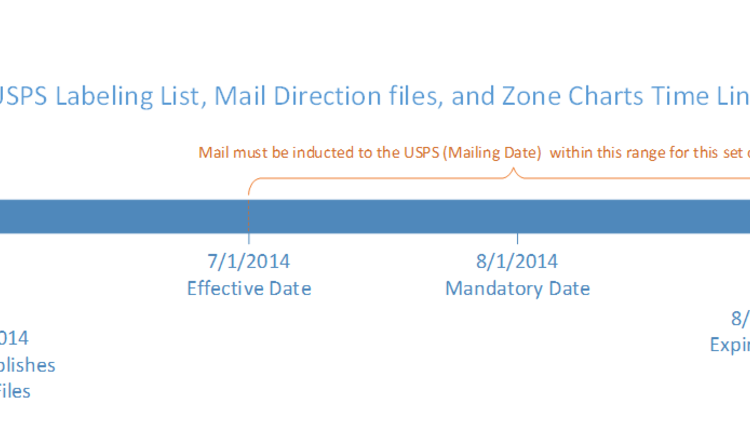Standard Mail is the dominant class of mail by volume for delivery by the United States Postal Service. According to the 2010 Household Diary Survey, 22% of mail received by households was Standard Mail in envelopes. The next highest was 17% consisting of fliers and circulars, followed by what used to be the largest group: bills and invoices at 13%. Today's mailbox has become a cacophony of advertisements and offers. The line of distinction between what some recipients call "junk mail" and others call timely offers comes down to relevancy in the message, or what I consider to be truly intelligent mail.
Software is an essential tool in crafting a truly intelligent mail piece and it all begins with data. More precisely, it begins with clean data. Address data that is complete, correct, and current is only the beginning. Marketers must also consider additional data elements such as demographic information, geographic location, and household information. That last element, household data, is particularly important for today's data matching and consolidating software tools.
The traditional phrase of "merge/purge" was often relegated to removing duplicate records and purging unwanted or outdated information. While still an essential step to reduce costs and avoid the proliferation of unwanted ("junk") mail, today's direct marketer needs to dive deeper into their data in order to uncover essential attributes of a targeted recipient if they want to find relevance in the mailbox.
Householding, a term used to describe the consolidation of multiple records that often have the same base address, is one way in which astute mailers look to improve message relevance in the mailbox. A "household" for data is two or more records grouped together based on an established match criterion. For example, match criteria may be set such that address A and address B are in the same "household" because they both have the same exact primary and secondary address, city, state, and ZIP Code. This is often the most common example of "householding". However, a "household" can also be the same apartment complex or perhaps the same business with various subsidiaries.
Geocoding is another tool leveraged to find relevancy in the mailbox. Where a recipient actually lives is not necessarily where they receive their mail. It is not uncommon to have the city associated with a USPS ZIP Code be completely different from the city in which the recipient lives and pays property taxes. Knowing the actual latitude and longitude of the physical addresses versus the mailing address can be essential to properly messaging the recipient. For example, offering a free cup of coffee to all addresses within one mile of a newly opened coffee shop might sound like a good idea at first, until you find out that some of the recipients will have to drive several miles out of their way to cross a river that separates the town.
Finding relevance in the mailbox is also about messaging innovation. Variable messaging is not a new concept, but the software and data available to become increasingly innovative are. For example, social media is booming, and with it comes a deluge of data that was once difficult, if not impossible, for marketers to obtain without direct participation from customers and prospects via the use of surveys and conversations with telemarketers. Couple this with software that can work personalized messages into any type of mailing, and you have a mailpiece that has the potential to deliver powerful results.
Direct marketers arguably have more data available to them today than ever before and there doesn't seem to be any signs that this will diminish. They also have access to increasingly sophisticated software capable of matching and consolidating data using custom business rules. When leveraged correctly, this array of data and sophisticated software can improve targeted messaging, create intelligent mail, and enable mail to become more personal and relevant.
Christopher Lien, Vice President, Software Marketing, Bell and Howell can be reached at ChrisL@bccsoftware.com.
Software is an essential tool in crafting a truly intelligent mail piece and it all begins with data. More precisely, it begins with clean data. Address data that is complete, correct, and current is only the beginning. Marketers must also consider additional data elements such as demographic information, geographic location, and household information. That last element, household data, is particularly important for today's data matching and consolidating software tools.
The traditional phrase of "merge/purge" was often relegated to removing duplicate records and purging unwanted or outdated information. While still an essential step to reduce costs and avoid the proliferation of unwanted ("junk") mail, today's direct marketer needs to dive deeper into their data in order to uncover essential attributes of a targeted recipient if they want to find relevance in the mailbox.
Householding, a term used to describe the consolidation of multiple records that often have the same base address, is one way in which astute mailers look to improve message relevance in the mailbox. A "household" for data is two or more records grouped together based on an established match criterion. For example, match criteria may be set such that address A and address B are in the same "household" because they both have the same exact primary and secondary address, city, state, and ZIP Code. This is often the most common example of "householding". However, a "household" can also be the same apartment complex or perhaps the same business with various subsidiaries.
Geocoding is another tool leveraged to find relevancy in the mailbox. Where a recipient actually lives is not necessarily where they receive their mail. It is not uncommon to have the city associated with a USPS ZIP Code be completely different from the city in which the recipient lives and pays property taxes. Knowing the actual latitude and longitude of the physical addresses versus the mailing address can be essential to properly messaging the recipient. For example, offering a free cup of coffee to all addresses within one mile of a newly opened coffee shop might sound like a good idea at first, until you find out that some of the recipients will have to drive several miles out of their way to cross a river that separates the town.
Finding relevance in the mailbox is also about messaging innovation. Variable messaging is not a new concept, but the software and data available to become increasingly innovative are. For example, social media is booming, and with it comes a deluge of data that was once difficult, if not impossible, for marketers to obtain without direct participation from customers and prospects via the use of surveys and conversations with telemarketers. Couple this with software that can work personalized messages into any type of mailing, and you have a mailpiece that has the potential to deliver powerful results.
Direct marketers arguably have more data available to them today than ever before and there doesn't seem to be any signs that this will diminish. They also have access to increasingly sophisticated software capable of matching and consolidating data using custom business rules. When leveraged correctly, this array of data and sophisticated software can improve targeted messaging, create intelligent mail, and enable mail to become more personal and relevant.
Christopher Lien, Vice President, Software Marketing, Bell and Howell can be reached at ChrisL@bccsoftware.com.






